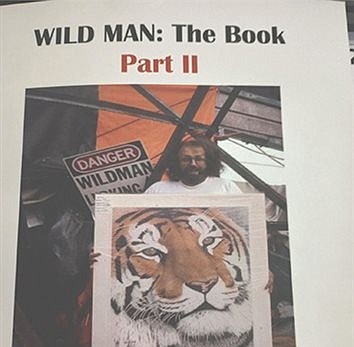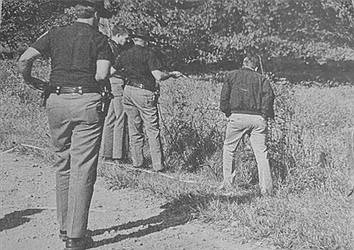What to do when you find baby animals in the wild
July 20, 2023 at 11:59 a.m.

Summertime brings more outdoor opportunities, which often brings us more animal encounters. It is not uncommon to come across a baby animal or bird that appears abandoned. While the instinct to help may be strong for animal lovers, it is important to know when intervention is necessary and when it may do more harm than good. Here are some tips to help you determine whether to take action:
Signs that a wild animal needs help include being brought by a cat or dog, featherless or nearly featherless birds on the ground, shivering, a dead parent nearby, crying and wandering all day, and visible signs of injury such as broken limbs or bleeding. If you notice any of these signs, it is recommended to seek help from a local wildlife rehabilitator by contacting the Division of Fish and Wildlife at 317-232-4200 or emailing [email protected]. Follow their instructions on safely capturing and transporting the animal for treatment. If you’re unable to locate a rehabilitator, try contacting an animal shelter, humane society, animal control agency, nature center, state wildlife agency or veterinarian.
Different species have different needs, so it's important to know what is normal for each. For birds: Featherless or nearly featherless baby birds that have fallen from their nest but appear unharmed can be placed back in the nest if it can be done safely. Fully feathered birds may require a new nest if the original one is destroyed or too high to reach. If the parent birds do not return, contact a rehabilitator. Fledglings, birds with fully feathered bodies but short or non-existent tail feathers, may hop on the ground and learn to fly from there. If they are being fed by their parents and appear healthy, they should be left alone.
For baby deer, it is a common misconception that a fawn found alone is orphaned. If the fawn is lying calmly and quietly, their mother is likely nearby, and it is best to leave them alone. Similarly, with baby foxes, if they appear healthy and energetic, they should be left alone. However, if they seem sickly or weak, or if both parents are believed to be dead, it is advisable to seek help from a rehabilitator.
Baby opossums spend about two months nursing in their mother's pouch before riding on her back. If they fall off and are over seven inches long (not including the tail), they are likely old enough to be on their own. If they are shorter than seven inches, it is best to contact a rehabilitator. Baby rabbits that are at least four inches long, have open eyes, erect ears, and can hop well, are independent and should be allowed to fend for themselves. If the nest has been disturbed, lightly cover it with natural materials and monitor whether the mother returns within 24 hours.
Baby raccoons: If a baby raccoon has been alone for more than a few hours, they may be an orphan. Place an inverted laundry basket over the baby and monitor until nighttime, as the mother should come out to reclaim her baby. If the mother does not return, contact a licensed wildlife rehabilitator.
Baby squirrels: If a juvenile squirrel continuously approaches and follows people, their mother may be gone. If a baby squirrel falls from a nest or if a nest falls from a tree, give the mother squirrel a chance to reclaim the young and relocate them to a new nest. If necessary, provide a safe way for the mother to retrieve the baby, or contact a rehabilitator.
Latest News
E-Editions
Events
Summertime brings more outdoor opportunities, which often brings us more animal encounters. It is not uncommon to come across a baby animal or bird that appears abandoned. While the instinct to help may be strong for animal lovers, it is important to know when intervention is necessary and when it may do more harm than good. Here are some tips to help you determine whether to take action:
Signs that a wild animal needs help include being brought by a cat or dog, featherless or nearly featherless birds on the ground, shivering, a dead parent nearby, crying and wandering all day, and visible signs of injury such as broken limbs or bleeding. If you notice any of these signs, it is recommended to seek help from a local wildlife rehabilitator by contacting the Division of Fish and Wildlife at 317-232-4200 or emailing [email protected]. Follow their instructions on safely capturing and transporting the animal for treatment. If you’re unable to locate a rehabilitator, try contacting an animal shelter, humane society, animal control agency, nature center, state wildlife agency or veterinarian.
Different species have different needs, so it's important to know what is normal for each. For birds: Featherless or nearly featherless baby birds that have fallen from their nest but appear unharmed can be placed back in the nest if it can be done safely. Fully feathered birds may require a new nest if the original one is destroyed or too high to reach. If the parent birds do not return, contact a rehabilitator. Fledglings, birds with fully feathered bodies but short or non-existent tail feathers, may hop on the ground and learn to fly from there. If they are being fed by their parents and appear healthy, they should be left alone.
For baby deer, it is a common misconception that a fawn found alone is orphaned. If the fawn is lying calmly and quietly, their mother is likely nearby, and it is best to leave them alone. Similarly, with baby foxes, if they appear healthy and energetic, they should be left alone. However, if they seem sickly or weak, or if both parents are believed to be dead, it is advisable to seek help from a rehabilitator.
Baby opossums spend about two months nursing in their mother's pouch before riding on her back. If they fall off and are over seven inches long (not including the tail), they are likely old enough to be on their own. If they are shorter than seven inches, it is best to contact a rehabilitator. Baby rabbits that are at least four inches long, have open eyes, erect ears, and can hop well, are independent and should be allowed to fend for themselves. If the nest has been disturbed, lightly cover it with natural materials and monitor whether the mother returns within 24 hours.
Baby raccoons: If a baby raccoon has been alone for more than a few hours, they may be an orphan. Place an inverted laundry basket over the baby and monitor until nighttime, as the mother should come out to reclaim her baby. If the mother does not return, contact a licensed wildlife rehabilitator.
Baby squirrels: If a juvenile squirrel continuously approaches and follows people, their mother may be gone. If a baby squirrel falls from a nest or if a nest falls from a tree, give the mother squirrel a chance to reclaim the young and relocate them to a new nest. If necessary, provide a safe way for the mother to retrieve the baby, or contact a rehabilitator.





